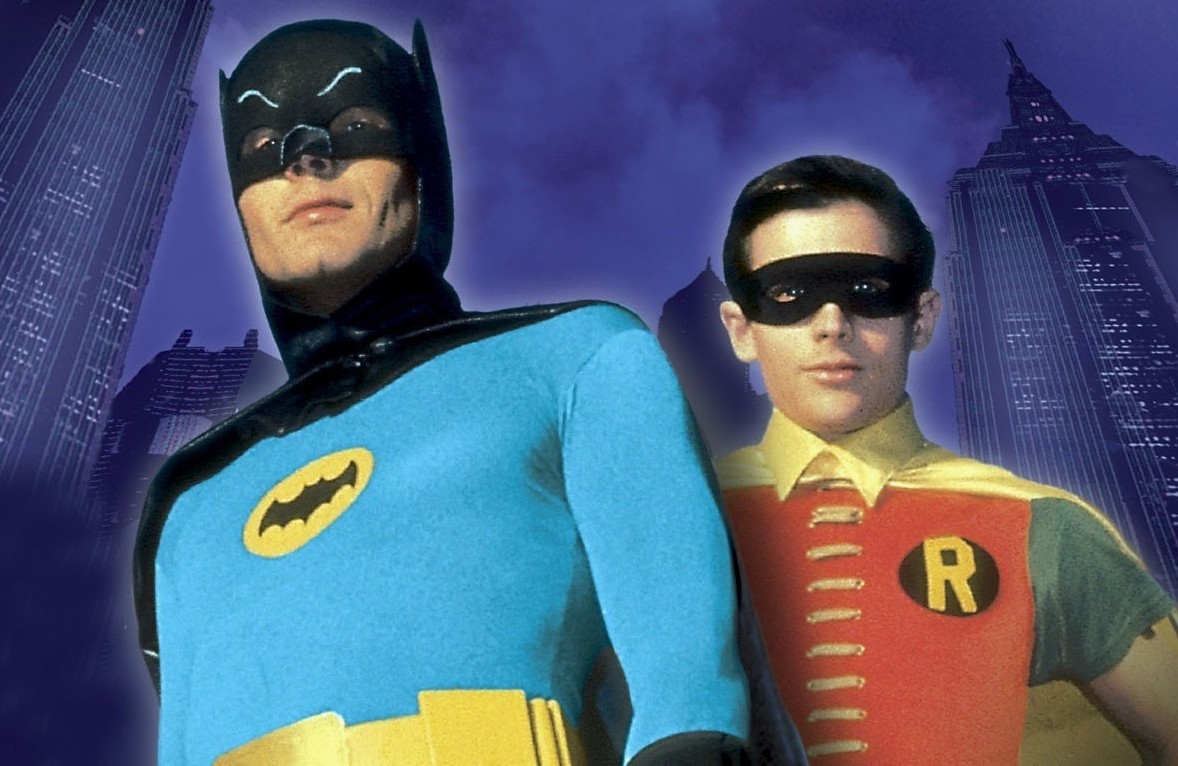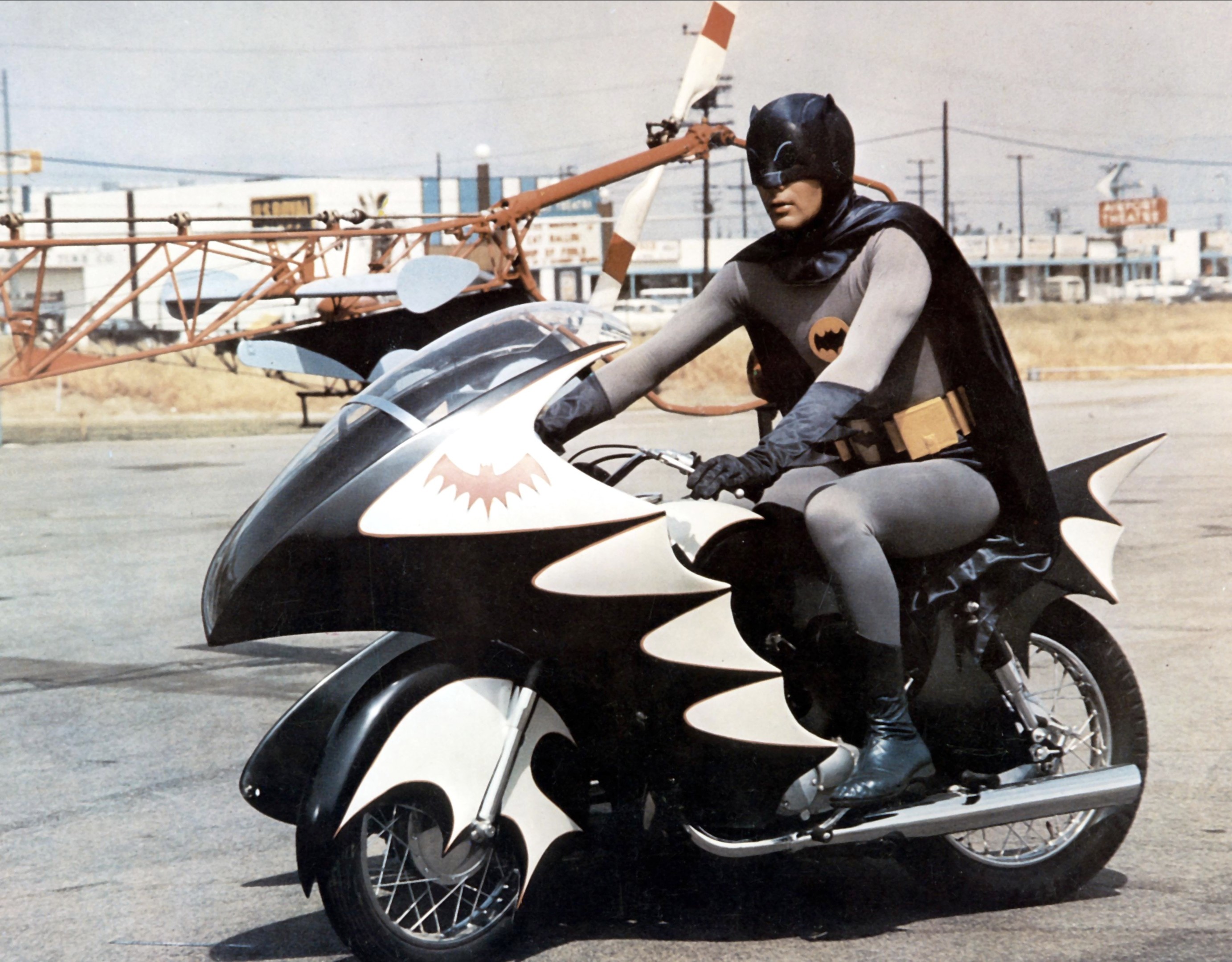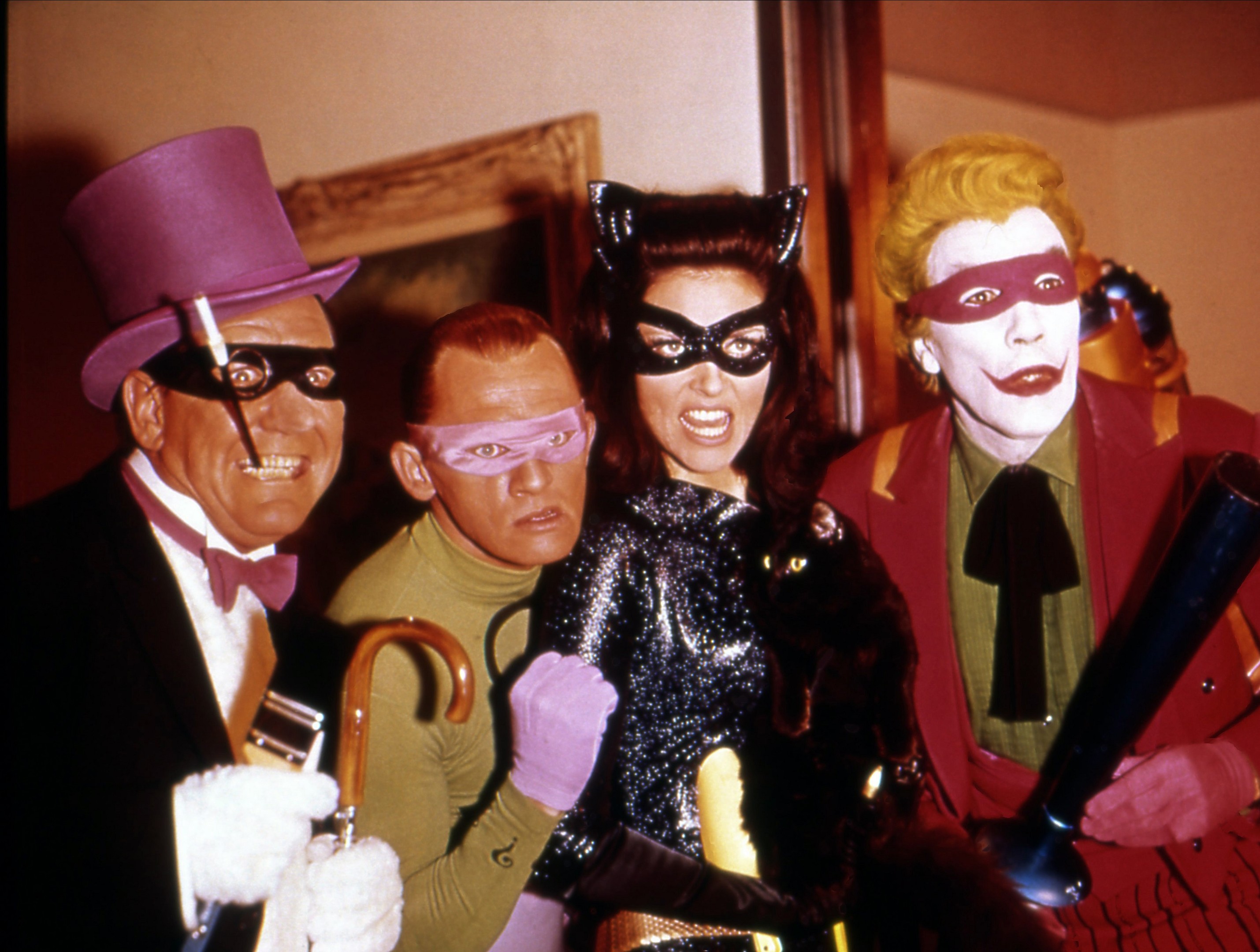
And let’s face it, superheroes were much more fun in the swinging 60s.
The makers of the classic Batman series, which debuted in 1966, wanted to make sure you knew when Batman or his young sidekick Robin had landed a punch on an enemy.
They didn’t want to leave anything to chance, so they made the already- less-than-realistic fight scenes look exactly like they did in the comics by adding day-glo exclamations such as “Pow!”, “Bam!” and “Zonk!”
Not like now when it seems everyone wearing a spandex suit has to come complete with a heartbreaking backstory about how Mummy never hugged them.
And Batman is a case in point.
In the current big-screen blockbuster Batman V Superman, Ben Affleck plays Bruce Wayne and his crime-fighting alter ego as if he has more than a few bats in his belfry.
This takes its cue from Christian Bale’s three outings as Batman, which really put the “dark” in the Dark Knight, portraying him as a tortured soul haunted by his past.
It was gothic Gotham but in the past, Batman was in the fun camp — the emphasis on “camp”.
The idea had been to reinvigorate Batman with a TV show in the same hip and fun style as The Man From U.N.C.L.E., as comic sales had fallen so sharply, DC Comics were thinking of killing him off.
But in 1966, along came Adam West as Batman, and the TV show was such a success, sales of the comics went through the roof.
West was joined in the “Dynamic Duo” by Burt Ward’s Robin and each week, when tipped off by Alfred the butler that nefarious deeds were afoot, he’d exclaim: “To the Batpoles!” and the pair would slide down into the Batcave.
Key to their performance was that they hammed it up and always took each situation deadly seriously.
Now 87, West says: “You must believe, the moment you put on the mask and the utility belt, that you really are Batman.
“It’s a lot of fun to play Batman, probably more than anything else I’ve ever done.”
In 120 episodes, aired two and then three a week, the show hammered home its simple moral lessons to its young audience — wear a seatbelt, do your homework, eat vegetables and drink your milk.
As Ward adds: “They wanted us to be all-American, apple pie, antiseptic, every-mother-loves-them guys.
“But my favourite memories are of the end of each day that I didn’t have to go to the emergency hospital.
“Batman was a dangerous show to make, at least for me. We’d be swinging around on ropes and they’d forget to open the locks on the walls, so we’d just smash into them.
“In the first four or five days, I’d end up at the hospital after explosions caused second-degree burns.
“But now, you meet people and when they hear you were in Batman, they hear the tune in their head, and a smirk comes on their face because this was a very special show.”
Things go in cycles, so by 1968, audiences had tired of the camp Batman, the show was axed and West and Ward were as good as typecast.
The studio hadn’t helped when they stopped Ward taking the lead role in a certain movie during his time as Robin, and Dustin Hoffman stepped in to star in The Graduate instead.
West was offered the role of James Bond for 1970’s Diamonds Are Forever, but turned it down, believing Bond should always be British.
He admits: “It’s one of the most- difficult things to deal with in this business, creating a character who is so beloved and goes on and on.
“I had a tough time for four or five years.
“I went out and did theatre, I did regional stuff, crummy movies, I did anything I could just to keep working.
“But now I’m just grateful I have Batman and all those fans.”
After the show, Batman returned to his darker roots and the Caped Crusader was once more a “grim avenger of the night”.
But for two glorious years, he’d been the coolest — and campest — crime-fighter on the box.
Pow!
READ MORE
Ross King: Wonder Woman Gadot is the Gal to take on the superheroes

Enjoy the convenience of having The Sunday Post delivered as a digital ePaper straight to your smartphone, tablet or computer.
Subscribe for only £5.49 a month and enjoy all the benefits of the printed paper as a digital replica.
Subscribe
